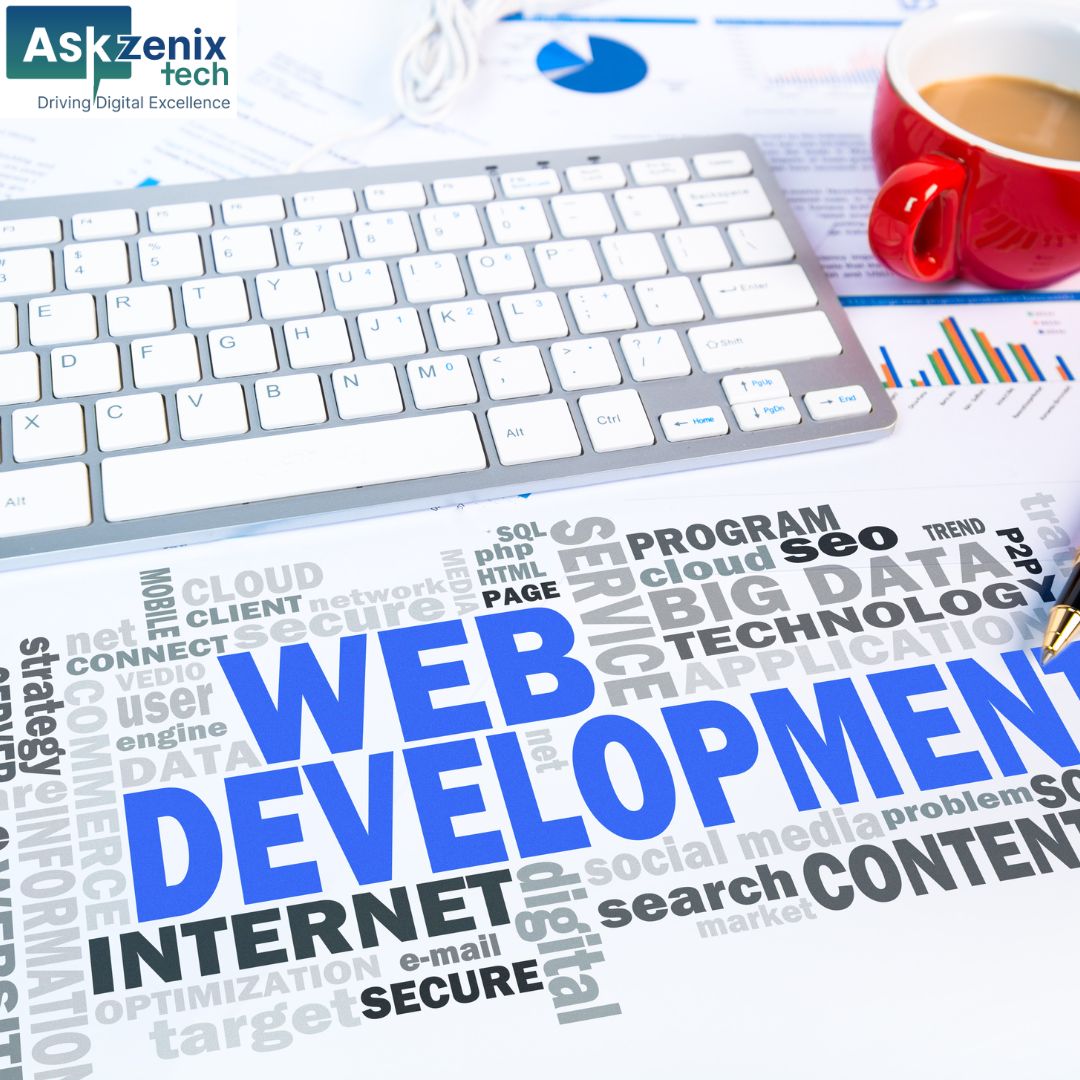Which is Better for Web Development: PHP or Python?
Web development relies on robust backend technologies to manage databases, handle requests, authenticate users, and power business logic. Among the leading choices for backend development are PHP and Python. Both languages have powered some of the world’s largest platforms — from Facebook (initially built with PHP) to Instagram (powered by Python).
This article offers a detailed, SEO-optimized comparison of PHP and Python for web development to help businesses and developers make informed technology decisions.
What is PHP?
PHP (Hypertext Preprocessor) is an open-source server-side scripting language specifically designed for web development. Developed in 1994, it integrates seamlessly with HTML and is traditionally deployed on web servers like Apache and NGINX.
Key Highlights:
- Open-source and supported by a large global community.
- Purpose-built for web application development.
- Well-established frameworks such as Laravel, Symfony, and CodeIgniter.
- Strong compatibility with relational databases, especially MySQL.
- Extensively used in content management systems (WordPress, Joomla, and Drupal).
PHP remains prevalent in powering over 76% of websites with known server-side technologies.
What is Python?
Python is a high-level, general-purpose programming language known for its clean syntax, readability, and versatility. Although not initially designed for web development, Python has become a favoured backend language with frameworks like Django, Flask, and FastAPI.
Key Highlights:
- Multi-purpose language suited for web, data science, machine learning, and automation.
- Simple, readable, and maintainable code structure.
- Modern, feature-rich frameworks like Django simplify rapid application development.
- Popular for developing scalable, high-performance enterprise web applications.
- Backed by a rapidly growing developer community and extensive libraries.
PHP vs Python: A Detailed Comparison
1️⃣ Popularity and Ecosystem
PHP has historically dominated the web development landscape, powering a vast number of content-driven sites and small-to-medium business applications. It remains heavily used in legacy systems and popular CMS platforms.
Python, however, has experienced significant growth in recent years, especially for modern web applications, AI, and data-driven solutions. Major companies like Instagram, Spotify, and Dropbox rely on Python-based web frameworks for large-scale applications.
Both languages enjoy extensive community support and open-source contributions.
2️⃣ Learning Curve and Syntax
PHP’s syntax is relatively straightforward for developers with prior experience in C-based languages. It allows embedding within HTML and enables fast development for simple web pages.
Python is widely praised for its clean, intuitive syntax that reads like plain English. This makes it highly accessible for beginners and ensures maintainable code for large-scale applications.
Python’s syntax uniformity and consistency often reduce development time, debugging effort, and learning barriers compared to PHP.
3️⃣ Framework Ecosystem
PHP benefits from a mature ecosystem of frameworks tailored for different use cases:
- Laravel: Feature-rich, secure, and developer-friendly.
- Symfony: Modular and scalable enterprise framework.
- CodeIgniter, Yii, Phalcon: Lightweight options for rapid development.
Python’s frameworks, particularly Django and Flask, are renowned for their flexibility and modern features:
- Django: High-level framework with built-in security, admin interface, ORM, and scalability tools.
- Flask: Minimalistic, micro-framework ideal for lightweight, modular applications.
- FastAPI: Modern, asynchronous, high-performance framework gaining popularity for API development.
While both ecosystems are rich, Python frameworks are more suited for modern web apps integrating AI, real-time features, or data analytics.
4️⃣ Performance Considerations
Historically, PHP has been optimized for web performance, particularly with the release of PHP 8 and its Just-In-Time (JIT) compiler, which enhanced execution speeds significantly.
Python’s performance for web development has improved with asynchronous capabilities via FastAPI and asyncio. However, for traditional synchronous web page serving, Python frameworks might be marginally slower than their PHP counterparts.
For data-heavy or AI-integrated applications, Python’s performance benefits from its extensive libraries and concurrency tools.
5️⃣ Scalability and Application Types
PHP scales well for traditional websites, eCommerce platforms, and CMS-based applications. It is commonly used for applications with structured, predictable traffic patterns.
Python excels in building scalable, enterprise-grade, and AI-driven applications. Its compatibility with cloud platforms, microservices, and big data processing makes it a preferred choice for modern, high-growth platforms.
Applications requiring machine learning, analytics dashboards, or real-time data handling typically perform better with Python-based architectures.
6️⃣ Security Capabilities
Both PHP and Python offer comprehensive security mechanisms through their frameworks and libraries.
PHP frameworks like Laravel and Symfony include built-in security features such as:
- CSRF protection
- SQL injection prevention
- Data sanitization
- Password hashing utilities
Python frameworks, especially Django, are recognized for emphasizing security best practices by default. They simplify:
- CSRF protection
- SQL injection prevention
- Clickjacking protection
- Secure authentication workflows
While both languages can support highly secure applications, Python frameworks often offer a more streamlined, out-of-the-box security configuration.
7️⃣ Flexibility and Integration Potential
PHP is primarily tailored for web development tasks and integrates smoothly with popular web servers and relational databases. Its scope, however, is relatively limited to web-specific applications.
Python stands out for its multipurpose capabilities. Beyond web development, Python supports:
- Artificial intelligence and machine learning
- Data visualization and analysis
- Automation and scripting
- IoT (Internet of Things)
- Scientific computing
Its rich ecosystem of libraries makes Python suitable for projects requiring diverse technology integrations, particularly where AI and data processing are involved.
8️⃣ Development Cost and Resource Availability
PHP developers are widely available due to the language’s long-standing popularity. This makes PHP projects more affordable for small-to-medium businesses and startups aiming for faster MVP releases.
Python developers, while increasingly available, may command slightly higher rates due to their demand across multiple industries — AI, data science, web, and enterprise software.
Although Python projects may incur higher initial costs, the benefits of scalability, maintainability, and versatility often result in lower total cost of ownership over time.
9️⃣ Job Market and Career Scope
PHP maintains a consistent job market, particularly for positions involving legacy systems, WordPress, Magento, and custom CMS platforms.
Python, on the other hand, presents broader and more lucrative career opportunities. Web development roles coexist with positions in:
- Data science
- AI/ML engineering
- DevOps
- Automation scripting
Python’s growing enterprise adoption continues to create demand for full-stack developers proficient in frameworks like Django and FastAPI.
Choosing Between PHP and Python
The decision to select PHP or Python for web development should align with the project’s specific requirements, long-term goals, and operational priorities:
PHP is recommended for:
- Content-driven websites
- eCommerce platforms
- Custom CMS projects
- Web applications with straightforward server-side logic
- Projects with constrained budgets and faster launch requirements
Python is ideal for:
- Enterprise-grade applications
- AI and data-centric web solutions
- Applications requiring API integrations and microservices
- Scalable, modular, and long-term projects
- Web apps integrating analytics, machine learning, or real-time features
Both languages are capable and well-supported, but Python’s versatility and modern framework ecosystem offer distinct advantages for future-proof, scalable applications.
Frequently Asked Questions (FAQs)
Q1. Is PHP still a good choice for new web development projects?
Yes, especially for CMS-driven, eCommerce, and simple web applications. Modern frameworks like Laravel have modernized PHP development practices.
Q2. Can Python replace PHP in the web development industry?
Python is rapidly gaining market share in modern web applications, AI, and data-heavy platforms. However, PHP remains dominant in CMS and legacy systems, ensuring both coexist in the near future.
Q3. Which language offers better scalability for large web applications?
Python offers superior scalability for enterprise and AI-integrated applications, while PHP is suitable for structured web platforms.
Q4. Is Python more secure than PHP?
Both can build secure applications, but Python frameworks like Django provide enhanced security defaults, reducing the risk of developer oversight.
Q5. Which language has better job market prospects?
Python offers broader career opportunities across web, data science, AI, automation, and cloud computing, whereas PHP remains valuable in web-specific roles.
Conclusion
Both PHP and Python have matured into powerful web development languages, each excelling in different application scenarios. PHP continues to serve content management systems and traditional web applications efficiently. In contrast, Python leads in modern web development trends — from scalable, enterprise solutions to AI-integrated platforms.
When choosing between the two, businesses and developers should assess project complexity, future scalability, budget constraints, and long-term technology goals to select the most suitable language for their needs.





